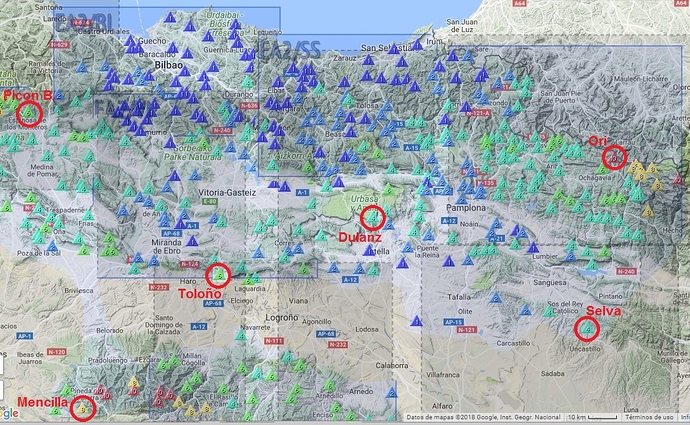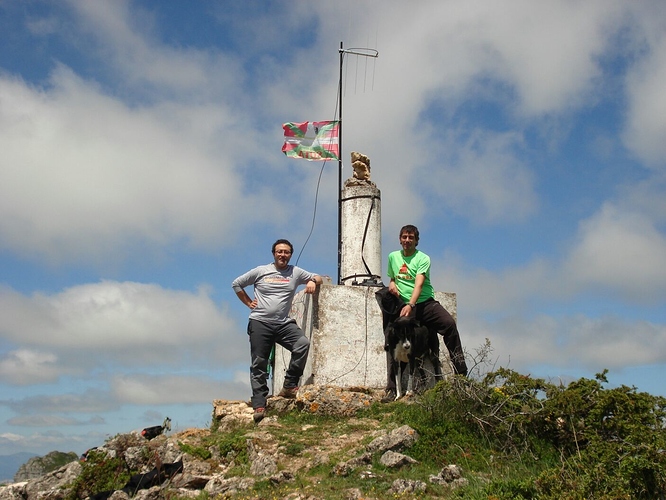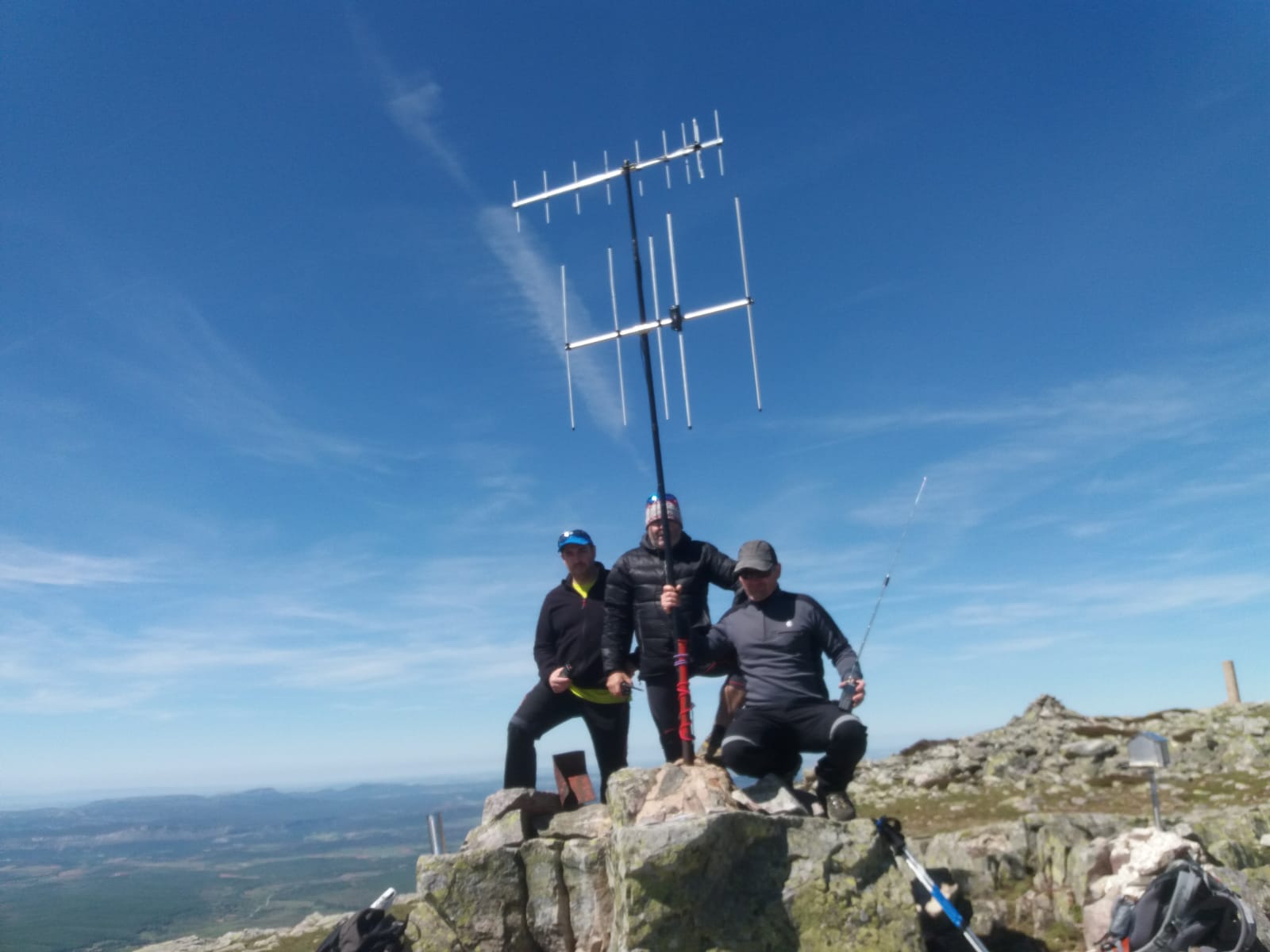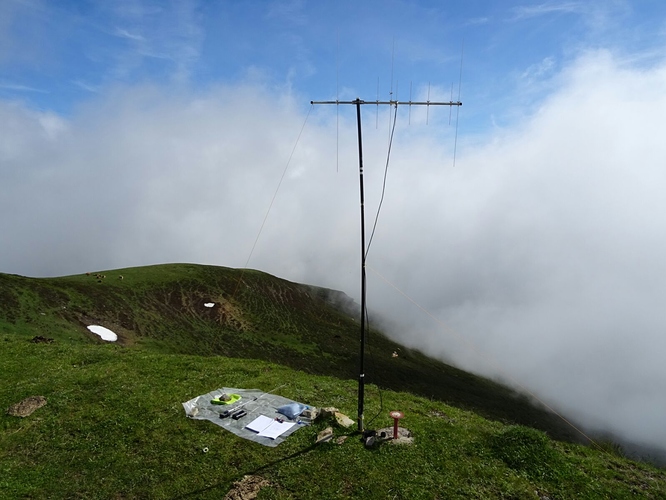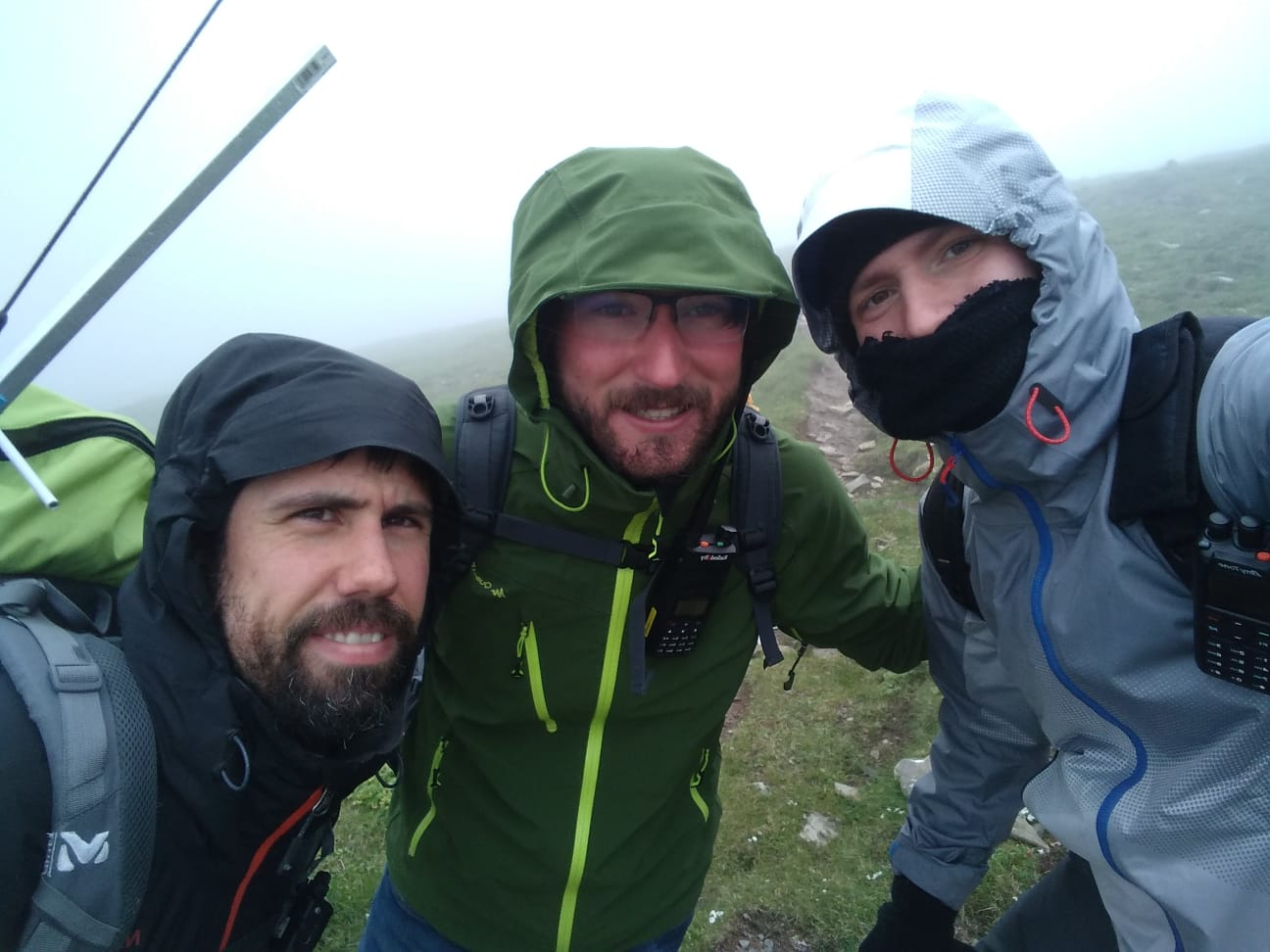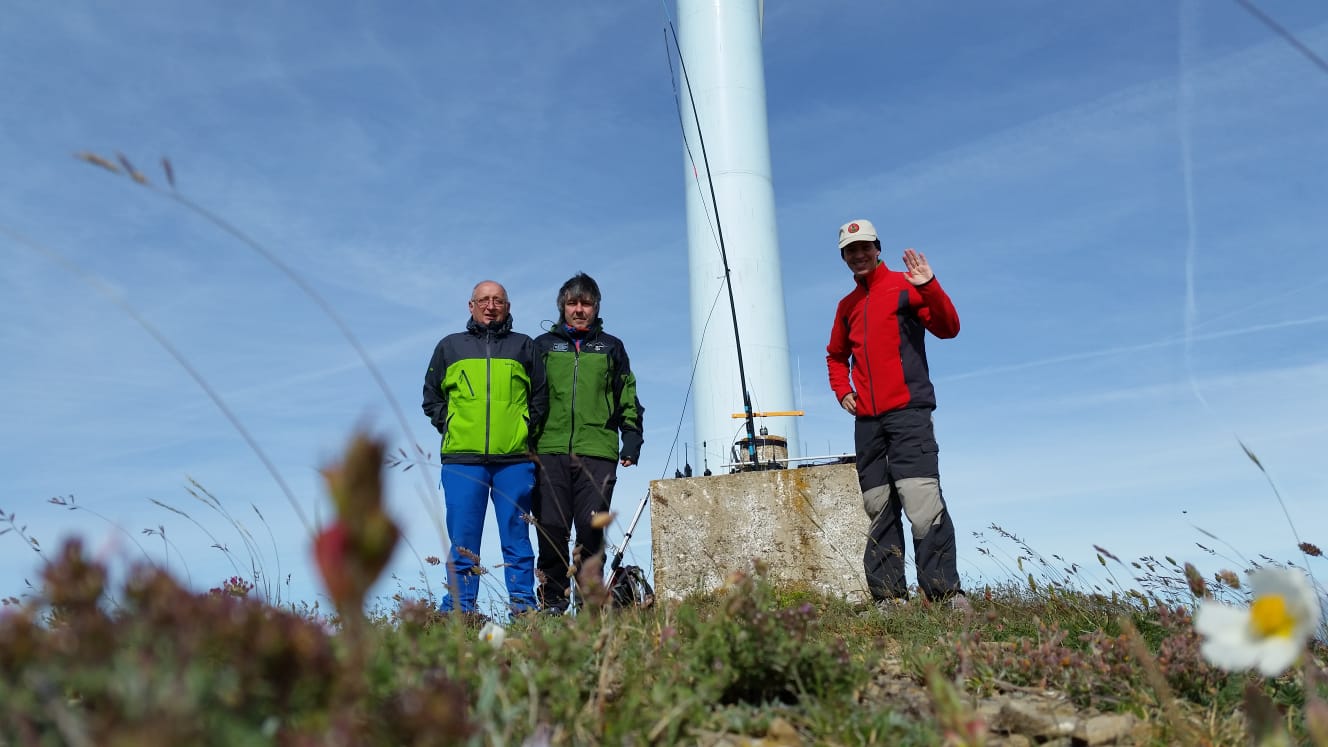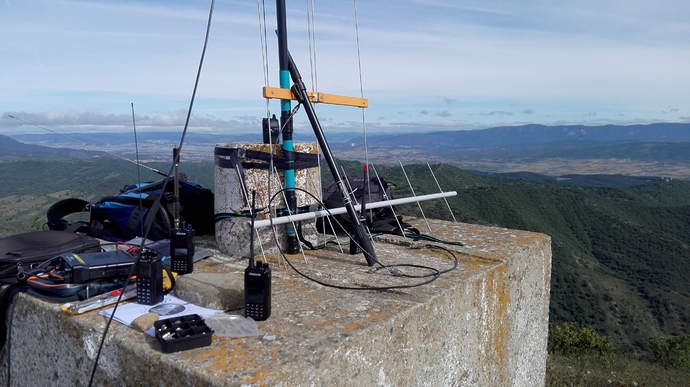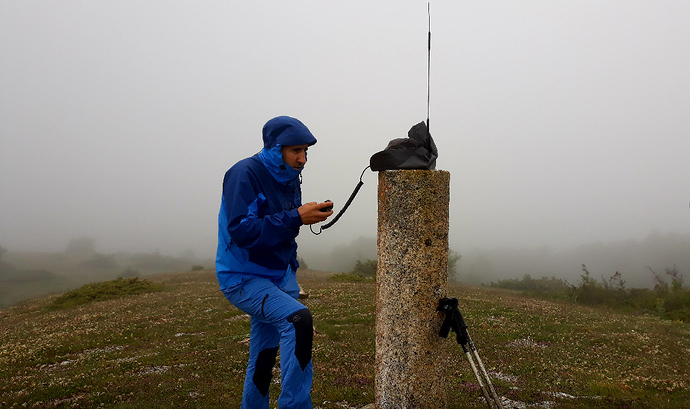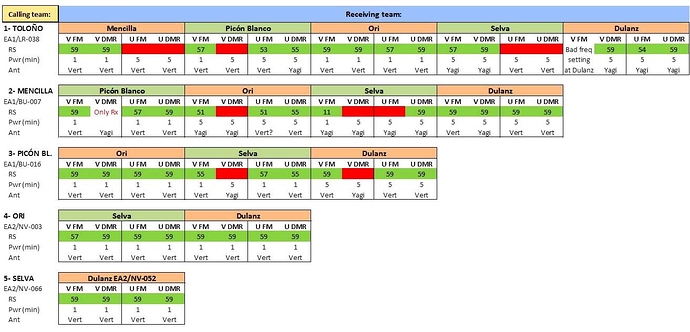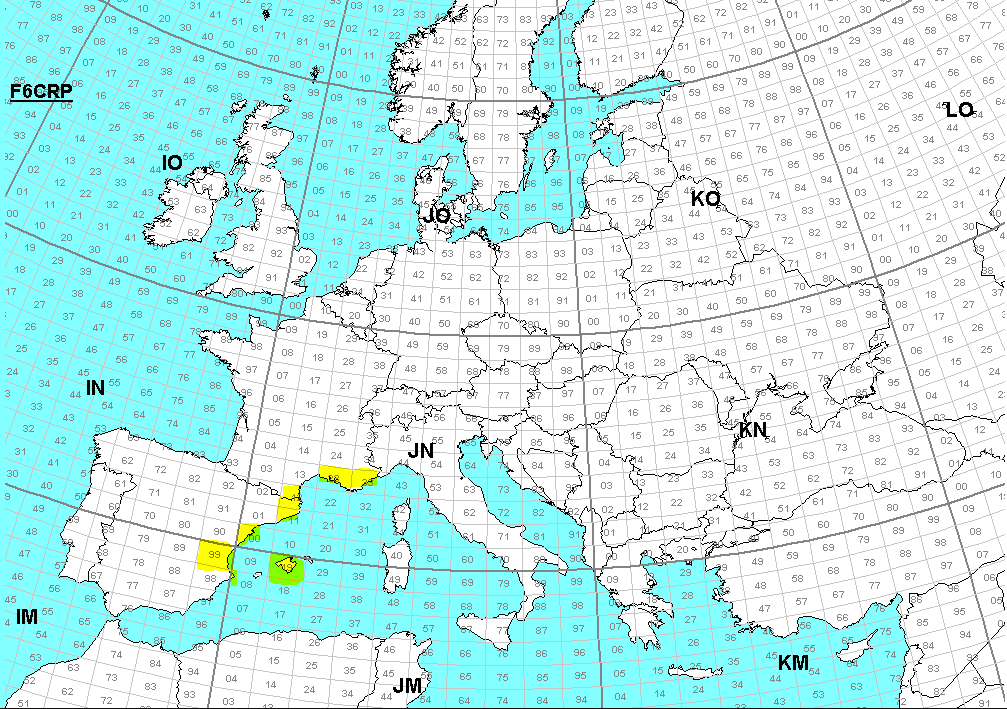Background
Here in Spain the DMR digital voice mode is quite popular. The number of 70cm repeaters with a DMR bridge is increasing last years. It is easy to chat with ham friends all over the country with a handheld. The market provides many cheap DMR handhelds, although some of them lack of quality.
Concerning SOTA, it is frequent to hear activation on 2m / 70cm in spring and summer time in Spain. Some hams started reasoning wether the coverage range would be better either in FM or in DMR (in Simplex mode).
If you serch on the web there is no clear information of what mode is better. See this entry on Wikipedia (Digital mobile radio):
“At a higher quality of voice, DMR outperforms analogue FM by about 11 dB. But at a lower quality of voice, analogue FM outperforms DMR by about 5 dB.”
With all that background on mind, a group of friends here in EA2 decided to run a multiple SOTA activation and compare FM and DMR modes. We tried to be well separated so that we could have a maximum distance of around 200 km between us from some summits. See the map of our locations:
We organised 6 teams of activators. See the distance and bearing between us:
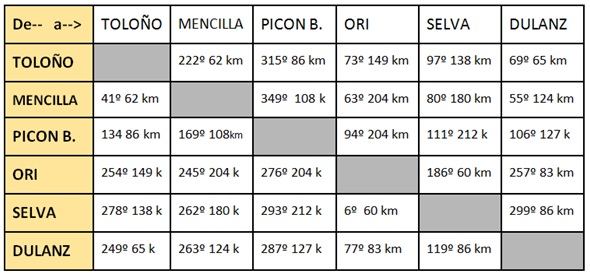
We had some meetings held through DMR (thanks to the repeaters network) to refine and agree the conditions for our test. This is what we decided:
- Activation date: Sunday 17th june 2018.
- TRX: use simple handhelds at 5 / 1 watt
- Antennas: priorise the use of simple vertical antennas, like the RH-770 (1/2 wave VHF / 5/8 wave UHF ) and carry some yagis for the case a contact was difficult to achieve with the vertical.
- Activation method: each team should try to contact the other 5 teams, comparing VHF and UHF, and FM versus DMR.
- Testing frequencies:

Activation report
Having had a lot of rain in the previous weeks, we all were a bit nervous with doubts of whether the weather would be fine enough on the test date.
The day arrived and all teams travelled to their detinations. We had scheduled 9:00 utc as the start time for the trials.
Here you see a buch of pictures of the 6 stations setup:
-
Team 1: Toloño EA1/LR-038. EA2EBX & EB2AOC
-
Team 2: Mencilla EA1/BU-007. EA2DXY, EA2DYS & EA2CSC
-
Team 3: Picon Blanco EA1/BU-016. EA2DCA
(Selfie stick forgotten!) -
Team 4: Ori EA2/NV-003. EA2MKR, EA2EKA & EA2OY
(with worst weather) -
Team 5: Selva EA2/NV-066 EA2ENE, EA2EHX & EA2BD
- Team 6: Dulanz EA2/NV-052 EA2EEB
(foggy there).
Funny to see how the weather was so different between us…
Test procedure
We agreed to run a safe channel via local repeaters on a common DMR node (TG 2142) to communicate to all teams every start of a call or the qsy to another band. That worked fine to keep us informed on what was going on.
The test started and one by one, every team tried contacting with the others, comparing reports with 5 or 1 watt and FM vs DMR.
The test was long but we were happy to be able to hear the others working S2S most of the times while waiting for our turn.
This chart shows contacts that were feasible:
Conclusion
Drawing conclusion is not that simple, and as you can guess, some of the teams had some mixed results, but after the test ended we put together some thoughts by looking at our log lists.
This is a summary of some clear points we could state:
-
All teams could contact the others in VHF, much easily than on UHF in some of the cases (2 times).
-
Concerning mode, VHF FM was reliable for all teams, while VHF DMR failed in some cases (5 times). This is extrange and might be caused by a defective DMR hardware in our rigs.
-
To notice the real difference between VHF and UHF the summits should be well separated, more than the 200 kilometer in our tests which show no significative difference between both bands. In fact no clear difference on the audio quality was confirmed with these tests.
-
Audio quality of FM vs DMR: when the signal level is good there is no difference. The audio on DMR is better than on FM when there is a minor degradation ( the hish on FM dissapear on DMR). Nevertheless, when the level is a bit worse and you can still hear well enough on FM, you get no audio on DMR.
-
Changing from 5w to 1w decreased the audio level in some cases, but not as much as we expected.
-
The built in S meters on the handhelds are not too acqurate to measure the signal levels. Audio level (R level 0 to 5) is a better way to compare signals for such a test.
-
When receiving simultaneously with several handhelds (different makers) we noticed a variation of sensibility; some of them received and some others not under the same incoming signal.
-
The use of a telescopic vertical antenna (RH-770 type) showed a better reception than when using the built-in handheld antenna (a short one). Sometimes reception improved when rotating the antenna and pointing it to certain directions. At long distances it is necessary to move the antenna to get better signals.
We used a secondary receiver connected to a Vertical antenna on top of a mast and reception was generally better than the handhelds with the whip. -
A distance of 200 kilometers is easy to achieve S2S with a good handheld and large whip. In most cases we got similar chances of a contact usign either VHF or UHF. Additional testing should be carried out at farther summits.
-
All teams agreed that using VHF FM is the simplest way to ensure a good mode for logging distant contacts. FM mode worked for us all while we experienced some difficulties on VHF DMR.
On top of that, we found it is easier to set a simplex frequency or to qsy is the frequency is in use on FM than on DMR, where you need to have the channels pre-programmed unless your DMR handheld had an easy manual mode to do so. -
The existing repeater network with DMR proved to be a good way to ensure a common net for a larger area than if we tried to contact between us using a single analog repeater.
Well, we enjoyed preparing the test and some of us will grab our Dual Analog + DMR handheld in summits again this summer for sure. We expect to meet others from a farther summit and check once more the difference between both modes to provide complementary data for this test. This will help to get a better conclusion and decide what is worth, although most believe we will stick to VHF FM as the simplest way to have reliable contacts and have much fun.
Thanks to all the crew, good friends here in EA2 land, for participating, Sometimes it is difficult to agree on a common date for running such tests and I know they did a great job and effort.
The only pity was we ran out of time after this long test to keep on doing a general activation. Next time!
Hope you find this test useful and encourage others to try and see by themselves.
Stay tuned and more to come soon.
73 de Ignacio EA2BD
